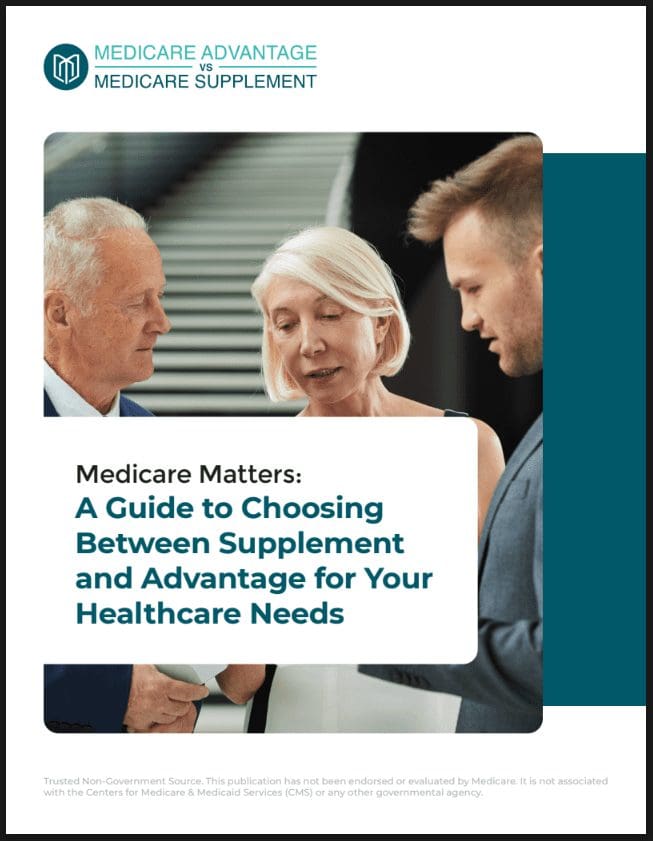Key Takeaways
-
Original Medicare does not include coverage for most prescription drugs, so you need to actively add separate coverage if you want it.
-
You can add prescription drug coverage through a standalone Medicare Part D plan or by choosing a Medicare Advantage plan that includes drug coverage, but you must be mindful of enrollment timelines.
Why Prescription Coverage Is Not Included in Original Medicare
Original Medicare, which includes Part A (hospital insurance) and Part B (medical insurance), offers essential coverage for inpatient and outpatient services. However, it does not automatically cover most prescription medications you take at home.
Medicare covers drugs administered in clinical or hospital settings, such as chemotherapy or injections you get at your doctor’s office, but it does not cover the medications you pick up at a pharmacy unless you add specific drug coverage.
This is why it’s important to explore your options for prescription coverage early—because without it, your out-of-pocket costs for everyday medications can be high.
What You Can Do to Get Prescription Drug Coverage
To avoid large out-of-pocket expenses, you can choose between two paths to add drug coverage to your Medicare benefits:
Enroll in a Medicare Part D Plan
Medicare Part D is the program created specifically to offer prescription drug coverage. It is separate from Original Medicare, and you’ll need to actively enroll in a standalone plan if you’re sticking with Parts A and B.
Things to know about Part D plans:
-
They are offered by private insurers approved by Medicare.
-
Each plan has a list of covered drugs, called a formulary.
-
You usually pay a monthly premium, an annual deductible (which can vary), and cost-sharing for prescriptions like copayments or coinsurance.
-
Some plans use tier systems to organize drug costs.
Choose a Medicare Advantage Plan With Drug Coverage
Also known as Medicare Part C, these plans often combine hospital, medical, and prescription drug coverage in one. You must still be enrolled in both Parts A and B to join a Part C plan, but you get all your Medicare benefits through one bundled plan.
Important notes:
-
Not all Medicare Advantage plans include drug coverage, so review details carefully.
-
These plans also have their own formularies, copayment structures, and network rules.
-
You cannot enroll in a standalone Part D plan if your Medicare Advantage plan already includes drug coverage.
Don’t Miss the Right Time to Enroll
Timing is everything when it comes to Medicare prescription drug coverage. Missing deadlines could lead to late penalties and gaps in coverage.
Here are the key enrollment periods you should know:
Initial Enrollment Period (IEP)
This is your first opportunity to sign up for Medicare, and it’s also the best time to add drug coverage.
-
Begins three months before the month you turn 65.
-
Includes the month of your 65th birthday.
-
Ends three months after your birthday month.
Adding a Part D plan during your IEP ensures you avoid late penalties and have coverage when your Medicare starts.
Annual Enrollment Period (AEP)
If you didn’t add prescription drug coverage when you first became eligible or want to switch plans, this is your next opportunity.
-
Runs from October 15 to December 7 every year.
-
You can add, drop, or switch your drug coverage during this window.
-
Any changes take effect on January 1 of the following year.
Medicare Advantage Open Enrollment Period
If you are already in a Medicare Advantage plan and want to switch or go back to Original Medicare with a Part D plan:
-
Runs from January 1 to March 31 each year.
-
You can switch to another Medicare Advantage plan or drop it and return to Original Medicare, adding a Part D plan if needed.
Special Enrollment Periods (SEPs)
Some situations allow you to change or add drug coverage outside of the usual windows:
-
You move out of your plan’s service area.
-
You lose other credible drug coverage.
-
You move into or out of a care facility.
These special periods vary in length and eligibility, so it’s important to review the rules carefully if your circumstances change.
What Happens If You Delay Adding Drug Coverage?
If you don’t sign up for prescription drug coverage when you’re first eligible and don’t have other creditable drug coverage (like through an employer or union), you may have to pay a late enrollment penalty.
Here’s what to expect:
-
The penalty is calculated as 1% of the national base premium for each full month you go without coverage.
-
You pay the penalty for as long as you have Medicare drug coverage—there’s no end to it.
The sooner you add Part D or switch to a Medicare Advantage plan with drug coverage, the better.
How to Compare Prescription Coverage Options
Selecting the right plan for your prescription needs requires a bit of homework. Here’s how to compare your choices:
Review the Formulary
Each plan has a list of covered drugs, often organized in tiers. Check to make sure your current medications are included and note how they are classified. Lower-tier drugs typically cost less.
Understand the Cost Structure
In general, you may be responsible for:
-
A monthly premium
-
An annual deductible (up to $590 in 2025)
-
Copayments or coinsurance for medications
Plans can vary significantly, even in the same region, so it’s worth reviewing multiple options.
Evaluate the Pharmacy Network
Some plans only work with specific pharmacies. Using out-of-network pharmacies could cost more, or may not be covered at all. Make sure your preferred pharmacy is in-network.
Look at Plan Ratings
Medicare assigns star ratings to prescription plans based on quality and performance. These ratings can help you judge how reliable a plan is.
Coordinating Drug Coverage With Other Insurance
If you have other forms of insurance, like employer or retiree coverage, TRICARE, or Veterans Affairs benefits, it’s essential to understand how they coordinate with Medicare.
-
Some coverage types are considered creditable, meaning they meet Medicare’s standards. You won’t need to add a Part D plan until that coverage ends.
-
If the coverage is not creditable, you may still face a late enrollment penalty.
-
Check with your benefits administrator to see how your coverage works with Medicare.
What to Know About Drug Coverage Changes Each Year
Even if you already have prescription coverage, it’s smart to review your plan every fall. Plans can change:
-
Covered medications
-
Tier placement of drugs
-
Pharmacy networks
-
Monthly premiums and deductibles
The Annual Notice of Change (ANOC) from your plan outlines these updates. If the new terms don’t work for you, switch during the Annual Enrollment Period.
Making the Right Prescription Choice
Adding drug coverage isn’t optional—it’s essential for protecting your health and finances. You have more than one way to get the coverage you need, but it requires proactive decision-making and attention to enrollment timelines.
If you’re unsure which path to take or need help comparing options, get in touch with a licensed agent listed on this website for professional advice.









